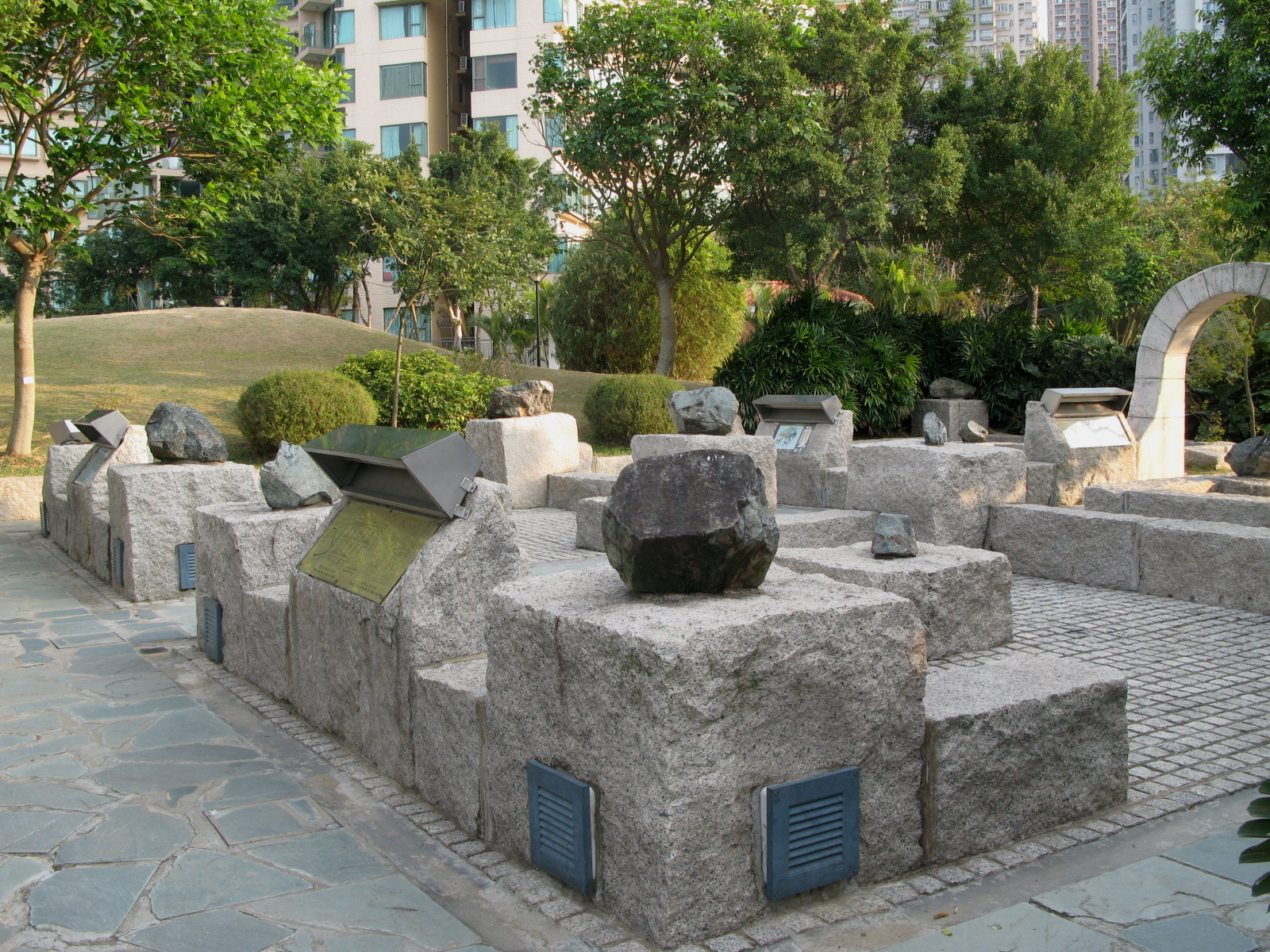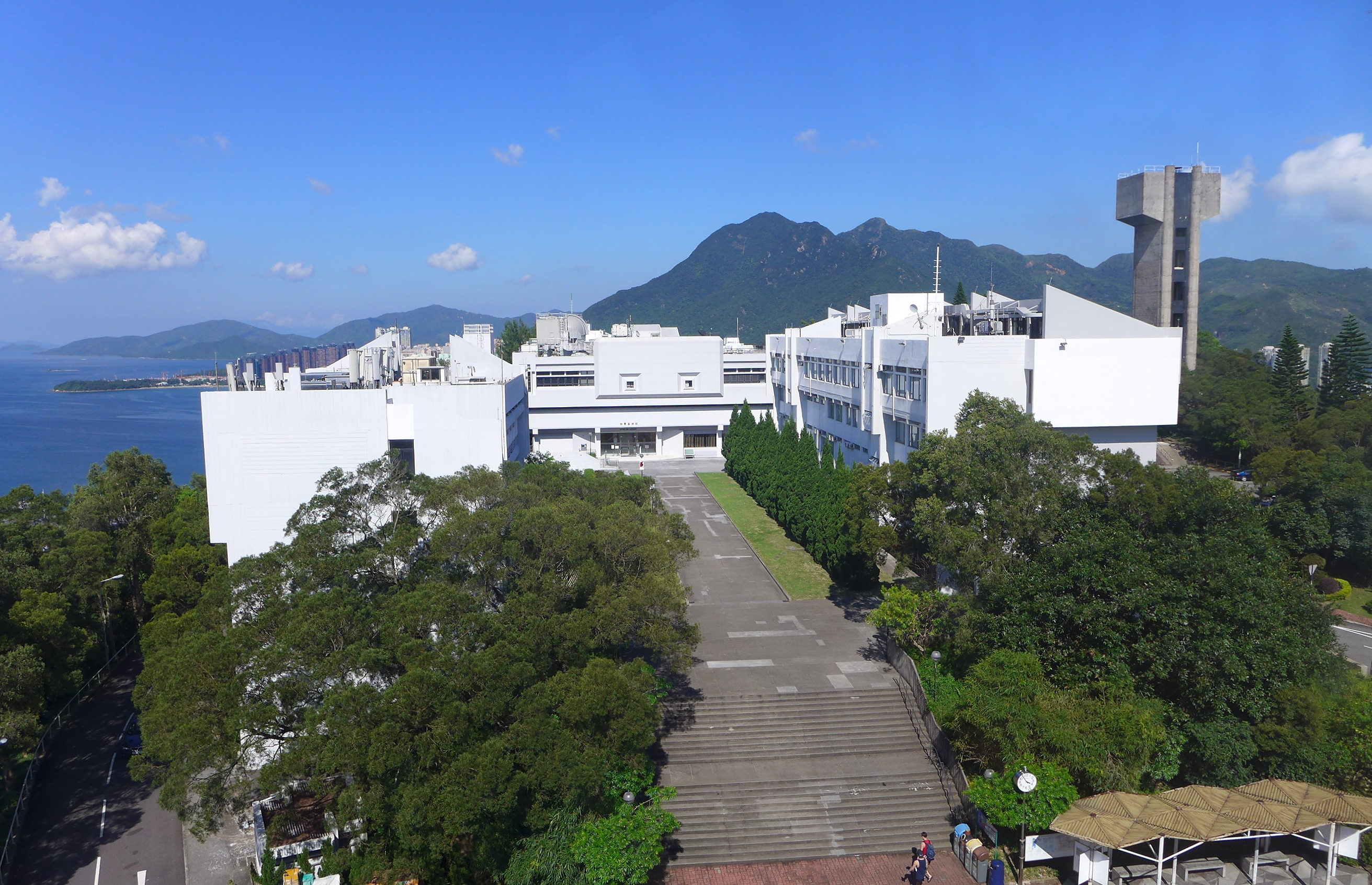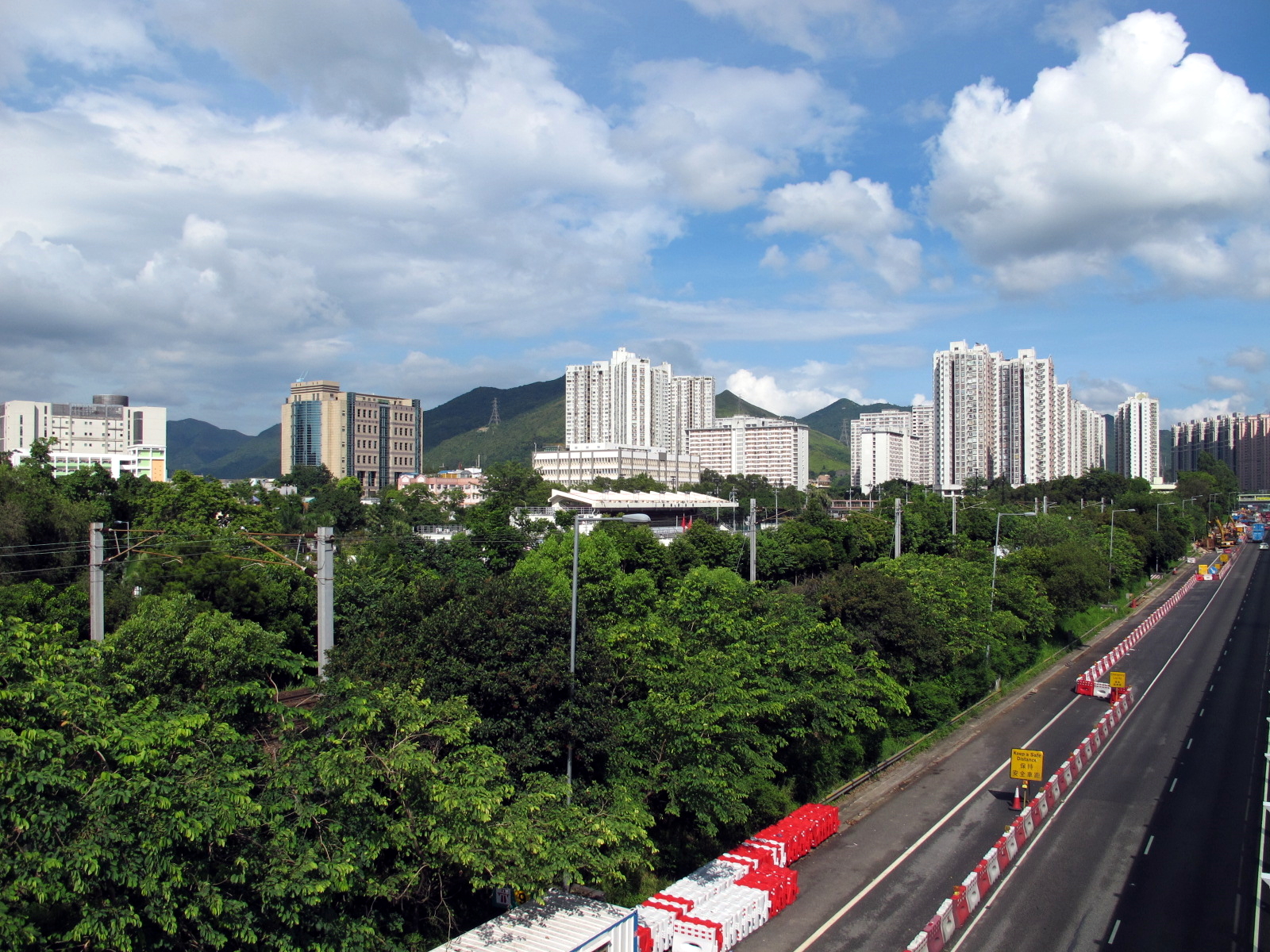|
Ma Liu Shui
Ma Liu Shui is an area in Sha Tin District, in the New Territories, Hong Kong. The area faces Tide Cove (Sha Tin Hoi) and Tolo Harbour. The Chinese University of Hong Kong and the Hong Kong Science Park are located in Ma Liu Shui. Name etymology Ma Liu Shui is directly and phonetically translated to English from "馬料水" in Cantonese. It literally means "the water that the horses feed on". It was originally named "馬嫽水", with the same phonetic translation, literally meaning "the water that the horses play in". According to legend of Hakkas, hundreds of years ago when the government of Bao'an County was riding his horse around towns to announce the collection of rice and crops, the horse stopped in the area and went down the hills to drink and play in the lake. It would not leave and looked as if it were at home. The Hakka villagers observed this strange phenomena and cleverly suggested that the horse may have originated from there, therefore the sense of belonging ... [...More Info...] [...Related Items...] OR: [Wikipedia] [Google] [Baidu] |
New Territories
The New Territories (N.T., Traditional Chinese characters, Chinese: ) is one of the three areas of Hong Kong, alongside Hong Kong Island and Kowloon. It makes up 86.2% of Hong Kong's territory, and contains around half of the population of Hong Kong. Historically, it is the region described in the The Convention for the Extension of Hong Kong Territory, Convention for the Extension of Hong Kong Territory. According to that treaty, the territories comprise the mainland area north of Boundary Street on the Kowloon Peninsula and south of the Sham Chun River (which is the border between Hong Kong and mainland China), as well as over 200 Outlying Islands, Hong Kong, outlying islands, including Lantau Island, Lamma Island, Cheung Chau, and Peng Chau in the territory of Hong Kong. Later, after New Kowloon was defined from the area between the Boundary Street and the Kowloon Ranges spanned from Lai Chi Kok to Lei Yue Mun, and the extension of the urban areas of Kowloon, New Kowloon ... [...More Info...] [...Related Items...] OR: [Wikipedia] [Google] [Baidu] |
Chung Chi College
The Chung Chi College is one of the constituent colleges of The Chinese University of Hong Kong, a public university in New Territories, Hong Kong. The college is one of the three original colleges that joined to form the CUHK in 1963. Founded in 1951 by representatives of Protestant churches in Hong Kong, it was formally incorporated under the Chung Chi College Incorporation Ordinance in 1955. Among the colleges of CUHK, Chung Chi is the only one with a religious background. History Chung Chi College was founded in 1951 by the representatives of Protestant Churches in Hong Kong to meet the need for a local institution of higher learning. The Board of Regents of St. John's University, Shanghai moved to Hong Kong after it was closed by the Communist government and assisted in the founding of Chung Chi College. The college aims to provide further education in accordance with Christian traditions so that its students can develop an appreciation of both Western and Chinese c ... [...More Info...] [...Related Items...] OR: [Wikipedia] [Google] [Baidu] |
New Territories North (constituency)
The New Territories East geographical constituency was one of the five geographical constituencies in the Legislative Council of Hong Kong. It was established in 1998 for the 1998 Hong Kong legislative election, first SAR Legislative Council election and was abolished under the 2021 Hong Kong electoral reform, 2021 overhaul of the Hong Kong electoral system. It encompassed Sha Tin District, Tai Po District, North District, Hong Kong, North District and Sai Kung District. In the 2016 Hong Kong legislative election, 2016 Legislative Council election, nine members of the Legislative Council using the Hare quota of party-list proportional representation with 1,139,616 electorates in 2020. History The single-constituency single-vote system was replaced by the party-list proportional representation system for the 1998 Hong Kong legislative election, first SAR Legislative Council election designed by Beijing to reward the weaker pro-Beijing camp, pro-Beijing candidates and dilute the ... [...More Info...] [...Related Items...] OR: [Wikipedia] [Google] [Baidu] |
Tung Ping Chau
Tung Ping Chau () is an island in Hong Kong, part of Hong Kong UNESCO Global Geopark. It is also known as Ping Chau (). ''Tung'' (, meaning ''east'') is prepended to the name at times so as to avoid possible confusion with ''Peng Chau'', another island in Hong Kong with an identically pronounced name in Cantonese. Administratively, the island is part of the Tai Po District in the New Territories. Geography Geographically, Ping Chau is an offshore island located in the northeast corner of Hong Kong in Mirs Bay, close to the border with Guangdong, Guangdong Province in mainland China. The island has an area of 1.16 km2 and consists of shale rock. The island is the most easterly point of the Hong Kong territory and is much closer to mainland China (4 km) than to the main landmass of Hong Kong. It is close to Nan'ao Subdistrict, Nan'ao of Dapeng Peninsula, Dapeng. The island has the shape of a kidney bean with its concave side facing northeast. Its name "Ping Chau" ... [...More Info...] [...Related Items...] OR: [Wikipedia] [Google] [Baidu] |
Ma On Shan Line
The Ma On Shan line () was a commuter rail / rapid transit line that formed part of the Mass Transit Railway (MTR) system in Hong Kong. Coloured brown on the MTR map, the line acted as a branch of the East Rail line that connects the new towns of Sha Tin and Ma On Shan in the northeastern New Territories. The railway was one of three built by the Kowloon-Canton Railway Corporation (KCRC), which named it as Ma On Shan Rail (, abbreviated as ). Since KCRC's merger of operations with the MTR Corporation on 2 December 2007, the line has been operated as part of the MTR network. Along with the West Rail line, the line was integrated into Tuen Ma line Phase 1 on 14 February 2020 following the partial opening of the Sha Tin to Central Link. Overview and current status Construction of the Ma On Shan line began on 12 February 2001 and it fully opened for service on 21 December 2004, 3 days earlier than the proposed opening date. KCRC estimated the construction costs ... [...More Info...] [...Related Items...] OR: [Wikipedia] [Google] [Baidu] |
Ma On Shan (town)
Ma On Shan (Chinese: 馬鞍山) is a new town along the eastern coast of Tolo Harbour in the New Territories of Hong Kong. The neighbourhood takes its name from the twin peaks of Ma On Shan, which are partially located within the town. Although it was initially an extension of Sha Tin New Town, Ma On Shan has its own town centre and various government facilities, and is now classified as a separate new town in government reports. Administratively, it belongs to Sha Tin District. Geography Ma On Shan is located by the west face of the twin peaks of Ma On Shan, which can be translated as "horse saddle mountain". Situated in the northeastern part of Sha Tin District, the town is built on the strip between Tolo Harbour and Ma On Shan mountain. It is bordered by Wu Kai Sha to the north and by Tai Shui Hang to the south. History The original Ma On Shan Village still houses around 80 families. Yan Kwong Lutheran Church, one of two original churches established during the a ... [...More Info...] [...Related Items...] OR: [Wikipedia] [Google] [Baidu] |
United College (Hong Kong)
The United College of Hong Kong is one of the constituent colleges of the Chinese University of Hong Kong, a public university in New Territories, Hong Kong. The college is one of the three original colleges when the university was founded in 1963. It was founded in June 1956 by the amalgamation of five colleges: Wah Kiu, Canton Overseas, Wen Hua, Kwang Hsia and Ping Jing, members of a group of post-secondary colleges or former private universities based in Kwangtung (Guangdong ) means "wide" or "vast", and has been associated with the region since the creation of Guang Prefecture in AD 226. The name "''Guang''" ultimately came from Guangxin ( zh, labels=no, first=t, t= , s=广信), an outpost established in Han dynasty ...). Motto The motto of the United College is "Ming De Xin Min" (明德新民), meaning "make one's virtues shine and renew the people". It was modified from a passage in the old classic '' The Great Learning'' (大學). College heads Heads of United C ... [...More Info...] [...Related Items...] OR: [Wikipedia] [Google] [Baidu] |
New Asia College
New Asia College is a List of the constituent colleges of the Chinese University of Hong Kong, constituent college of the Chinese University of Hong Kong, a public university in New Territories, Hong Kong. The College was founded in 1949 by a group of scholars who left mainland China at the time of the Chinese Communist Revolution, 1949 Communist Revolution. It was located on Farm Road in Kowloon until 1963, when it joined two other colleges to form the Chinese University of Hong Kong. Campus The college is located on a mount in the university campus with an excellent view to Tide Cove and Ma On Shan (town), Ma On Shan. A circular road New Asia Circle (新亞坊) encircles the campus with New Asia Road (新亞路) leading to the central of the university, and United Road to United College (Hong Kong), United College, and Cheng Ming Link (誠明徑) to student residences. Facilities include the New Asia College Ch'ien Mu Library, the Pavillion of Harmony; New Asia Clock Tower, ... [...More Info...] [...Related Items...] OR: [Wikipedia] [Google] [Baidu] |
Yucca De Lac
Yucca de Lac is a high-end restaurant at the Peak Galleria in Hong Kong. The original restaurant was opened at Tai Po Road, Ma Liu Shui, in 1963 and closed on September 20, 2005. Located near the Chinese University of Hong Kong, it was famous for frequently serving as a scene for the black-and-white Cantonese films made in the 1960s. The site of the original restaurant was sold in 2005 to a local businessman at $380 million HKD for redevelopment as a real estate project. There were concerns from environmental groups that woodland on the site would not be preserved. Including the price of the land, developer Yucca Development invested over $1 billion in the 21-home project. On March 26, 2012 the Fung Lum Restaurant Group opened a USA branch of the bar and restaurant in the Stanford Shopping Center in Palo Alto, California. See also * Hong Kong tea culture The tea-drinking habits of Hong Kong residents derive from Chinese tea culture, primarily the Cantonese traditions suc ... [...More Info...] [...Related Items...] OR: [Wikipedia] [Google] [Baidu] |
Fanling
Fanling ( zh, t=粉嶺; also spelled Fan Ling or Fan Leng) is a town in the New Territories East of Hong Kong. Administratively, it is part of the North District. Fanling Town is the main settlement of the Fanling area. The name Fanling is a shortened form of Fan Pik Leng (). The area has several public and private estates. Northwest of Fanling is Sheung Shui and southeast is Tai Po. Areas Part of Fanling–Sheung Shui New Town, Fanling Town includes Luen Wo Hui (), the marketplace of Fanling before urban development in the area, and Wo Hop Shek (), where an uphill public cemetery is located. Fanling North is one of three new development areas currently being planned for North District, in parallel with Ta Kwu Ling and Kwu Tung North. Sights * Fanling Wai (), a walled village. * Fung Ying Seen Koon (), a Taoist temple. * Lung Yeuk Tau Heritage Trail * Tao Heung Foods of Mankind Museum (relocated to Fo Tan in 2008) Housing estates Public and private housing e ... [...More Info...] [...Related Items...] OR: [Wikipedia] [Google] [Baidu] |
Rural Committee
Rural committees () are bodies representing the welfare of indigenous residents in the New Territories of Hong Kong. The chairman of each rural committee is the representative in the Heung Yee Kuk, and is ''ex officio An ''ex officio'' member is a member of a body (notably a board, committee, or council) who is part of it by virtue of holding another office. The term '' ex officio'' is Latin, meaning literally 'from the office', and the sense intended is 'by r ...'' member of a district council. Overview There are now 27 rural committees in total, thereby forming the Heung Yee Kuk. Rural representative elections are held every four years, electing the village representatives and kaifong representatives of the rural committees. The composition of the rural committees are not statutorily regulated, even unelected villagers could become chairpersons of the rural committees. List of rural committees See also * * Rural Representative elections References Politic ... [...More Info...] [...Related Items...] OR: [Wikipedia] [Google] [Baidu] |
Kwan Tei
Kwan Tei () is an area in the New Territories of Hong Kong. It is northeast of Lung Yeuk Tau and at the northwest of Lau Shui Heung, namely northwest of the major new town of Fanling. Administration Kwan Tei is a recognized village under the New Territories Small House Policy. For electoral purposes, Kwan Tei is part of the Queen's Hill (constituency), Queen's Hill constituency of the North District Council. It is currently represented by Law Ting-tak, who was elected in the 2019 Hong Kong local elections, local elections. Geography The area situates on a plain surrounded by hills at its north and south. The Ng Tung River, Tan Sha River and Kwan Tei River are major rivers in the area. The plain is fertile and suitable for farming with various villages. Barracks The name of ''Kwan Tei'' means "military place" in Cantonese language, Cantonese. Barracks were built here by the British Army during the History of Hong Kong (1800s-1930s), colonial era. To the west of Kwan Tei, Gailio ... [...More Info...] [...Related Items...] OR: [Wikipedia] [Google] [Baidu] |







